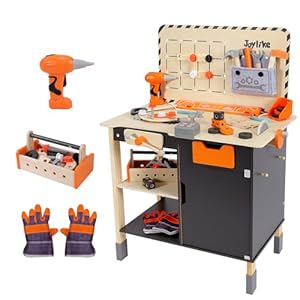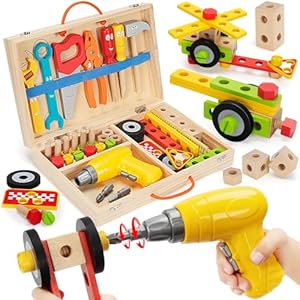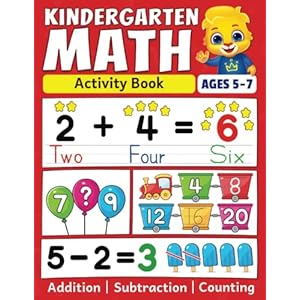
When you work in particular schooling, you’ve in all probability heard the time period “job evaluation” tossed round throughout group conferences or skilled improvement classes. However what precisely does it imply—and why is it such a robust instrument in supporting scholar studying?
Let’s break it down in plain language, with real-world functions you should utilize immediately.
What Is a Activity Evaluation?
At its core, a job evaluation is the method of breaking a posh talent into smaller, manageable steps. As an alternative of anticipating a scholar to carry out a whole job , you’re taking a more in-depth take a look at every a part of the method and train it step-by-step.
Consider it like instructing somebody how you can make a sandwich. You wouldn’t simply say, “Go make a sandwich!”—you’d information them by means of every step:
- Get out the bread.
- Open the bread bag.
- Take out two slices.
- Get the peanut butter from the cupboard…
…and so forth.
By specializing in every particular person a part of the bigger job, you give college students the possibility to construct confidence, expertise success, and work towards independence in a extra structured and supportive manner.
Why Use Activity Evaluation?
Activity evaluation is particularly useful for college students with disabilities who might have further assist to grasp multi-step processes. Whether or not the purpose is educational, useful, behavioral, or associated to every day residing abilities, job evaluation helps you:
- Make summary duties extra concrete
- Cut back overwhelm and frustration
- Pinpoint the place a scholar could also be struggling
- Ship extra focused instruction
- Help talent generalization throughout settings
From tying footwear and brushing enamel to fixing a multi-step math downside or following classroom routines, job evaluation can be utilized throughout all age teams and topic areas.
Kinds of Activity Evaluation
There’s no one-size-fits-all strategy to job evaluation. The construction you select depends upon the scholar’s wants, the purpose, and the setting. Listed below are three frequent varieties of job evaluation:
1. Ahead Chaining
With ahead chaining, you train step one first. As soon as the scholar masters that step, you progress on to the subsequent one, and so forth. The grownup helps with all remaining steps till the scholar regularly completes all the job independently.
Instance: Instructing hand washing
- Step 1: Activate the tap (scholar does this independently)
- Steps 2–6: Grownup prompts or completes the remainder
2. Backward Chaining
This strategy focuses on instructing the final step first. The grownup helps with the sooner steps, and the scholar is chargeable for finishing the ultimate step on their very own. Over time, duty strikes backward till all the job is impartial.
Instance: Brushing enamel
- Steps 1–4: Grownup assists
- Step 5: Pupil rinses mouth independently
Backward chaining is nice for college students who profit from the quick reward of finishing the duty.
3. Complete Activity Presentation
On this methodology, you train all steps of the duty throughout every session. The scholar makes an attempt every half, and the grownup gives assist as wanted. This strategy is usually used when college students can already carry out some steps independently or have the eye span to work by means of all the routine.
Methods to Create a Activity Evaluation
Making a job evaluation isn’t sophisticated, but it surely does take some statement and intentional planning. Right here’s how you can do it:
1. Determine the Goal Talent
Choose a talent the scholar must be taught—this might be educational (e.g., writing a paragraph), behavioral (e.g., transitioning between actions), or useful (e.g., zipping a jacket).
2. Carry out the Activity Your self
Undergo the duty step-by-step, simply as the scholar would. This helps you discover the small particulars that is probably not apparent at first look.
3. Break It Into Clear, Observable Steps
Write out every step in clear, easy language. Maintain directions constant, and keep away from obscure language. As an alternative of “Prepare,” say “Put in your coat and backpack.”
4. Determine How You’ll Educate It
Select your methodology (ahead chaining, backward chaining, or whole job). Take into account whether or not you’ll use visible helps, verbal prompts, hand-over-hand steering, or different scaffolds.
5. Acquire Knowledge
Observe which steps the scholar completes independently, which want prompts, and the place errors happen. This information helps you monitor progress, regulate instruction, and rejoice progress.
Actual-Life Examples of Activity Evaluation
Listed below are a couple of examples of how job evaluation can be utilized in on a regular basis college routines:
Morning Arrival Routine:
- Dangle up backpack
- Take out communication folder
- Put lunchbox in bin
- Go to desk
- Start morning work
Writing a Paragraph:
- Learn the immediate
- Brainstorm concepts
- Write a subject sentence
- Write three element sentences
- Write a concluding sentence
- Edit for punctuation and spelling
Fixing a Phrase Downside in Math:
- Learn the issue
- Circle key info
- Select a technique
- Remedy the issue
- Test your reply
Suggestions for Success
- Use visuals when attainable. Photos, icons, or visible schedules can assist college students perceive the steps extra clearly.
- Mannequin every step. Show what success appears to be like like so the scholar is aware of what to purpose for.
- Be constant. Use the identical language and expectations throughout workers members.
- Construct in reward. Have a good time each step mastered—progress is progress!
- Alter as wanted. If a scholar is caught, contemplate breaking the duty down additional or instructing in a unique order.
A Instrument for Your Instructing Toolbox
Activity evaluation is without doubt one of the only, evidence-based instruments in your instructing toolkit. It’s sensible, adaptable, and centered round assembly college students the place they’re. By breaking down advanced duties into manageable steps, you’re giving college students the possibility to construct actual abilities, develop their independence, and expertise success—one step at a time.
Whether or not you’re serving to a scholar learn to navigate a classroom routine or grasp a life talent that may serve them for years to come back, job evaluation provides you a transparent, supportive path ahead.
YOU MAY ALSO LIKE…
Trending Merchandise











